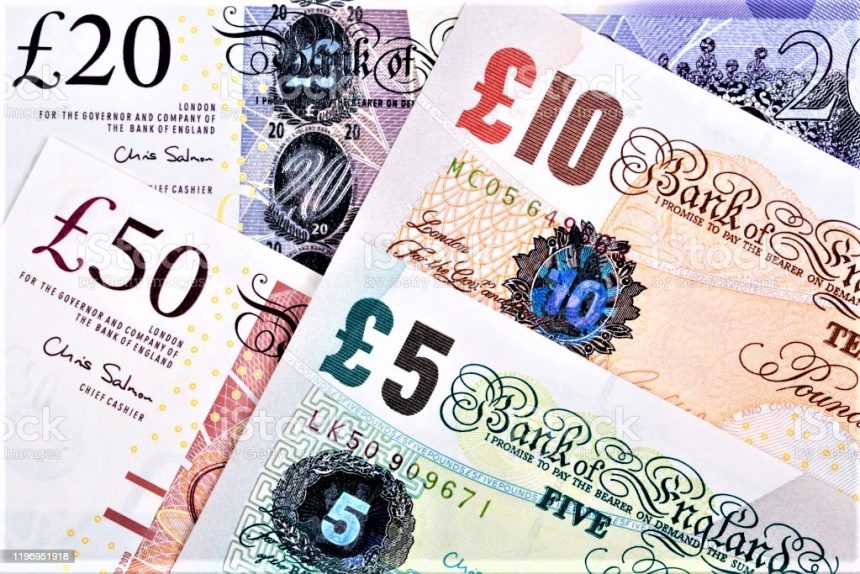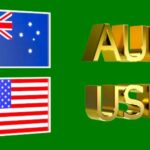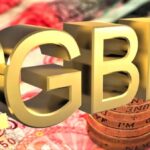UK Jobs Market Cools: A New Headwind for the Pound.
The Pound Sterling (GBP) faces renewed selling pressure across global forex markets as fresh labor market data from the United Kingdom confirms a gradual economic deceleration. According to the Office for National Statistics (ONS), the UK’s ILO Unemployment Rate edged up to 4.5% in the three months ending March—its highest since 2021—compared to 4.4% in the previous period. More significantly, job additions declined to 112,000, sharply below February’s 206,000, signaling a cooling demand for labor amid rising business uncertainty and fiscal headwinds.
This softness in employment data underscores the impact of rising costs for UK employers, particularly the increased National Insurance contributions and uncertainty stemming from global trade dynamics, notably evolving tariff threats from the United States under President Donald Trump’s trade policy revival. With businesses hesitant to commit to new hires, concerns about domestic growth momentum are now front and center for market participants.
Wage Growth Slows—A Blow to Inflation Expectations
Adding to the bearish tone, wage growth also moderated during the same period. Average Earnings Excluding Bonuses, a key metric watched by the Bank of England (BoE), increased by 5.6%—lower than the prior 5.9% and slightly below the market forecast of 5.7%. When bonuses are included, wage growth came in at 5.5%, which beat expectations of 5.2% but still slipped from the earlier 5.6%.
The deceleration in wage growth is particularly concerning in an inflation-sensitive environment. Softer earnings data means fewer inflationary pressures from the demand side, which in turn gives the BoE more room to cut interest rates in the coming months without fearing a spike in consumer prices.
BoE Rate Cut Reinforces Dovish Outlook
Last week, the BoE cut its key policy rate by 25 basis points to 4.25%, citing disinflationary progress and deteriorating domestic demand. Policymakers reiterated a “gradual and careful” approach to monetary easing, leaving the door open for further rate reductions if economic indicators continue to falter.
The latest labor market figures strengthen the BoE’s dovish hand. Lower employment growth and easing wage inflation could prompt the central bank to initiate another rate cut as early as June or August, especially if broader economic data remains soft. This anticipation has kept the GBP on the defensive across the currency board.
Investors Shift Focus to UK Q1 GDP and Production Data
While labor market data has set the tone for early-week trading, investor attention is now shifting toward the UK’s preliminary Q1 Gross Domestic Product (GDP) release and Industrial and Manufacturing Production data scheduled for Thursday. Markets expect GDP to show a 0.6% expansion for the first quarter of 2025, but a downside surprise could further dampen sentiment toward the Pound.
Similarly, the production figures will offer insights into the health of Britain’s industrial backbone. Analysts are cautious about overestimating the rebound, particularly given that recent manufacturing PMI prints have shown contractionary trends.
Pound Moves Higher but Fragile Amid Global Forces
Despite the negative domestic developments, the Pound has managed a modest rebound on Tuesday, trading near 1.3210 during the European session. This uptick, however, is more about temporary US Dollar weakness than Pound strength.
The US Dollar Index (DXY) hovers around 101.60 after a sharp rally on Monday, which followed the announcement of a 90-day tariff truce between the United States and China. The two economic superpowers agreed to slash tariffs by 115 percentage points, injecting short-term optimism into global financial markets.
However, the fragile nature of the truce—particularly unresolved issues around the US’s 20% fentanyl-related tariff on Chinese imports—leaves plenty of room for further geopolitical tensions, which could reignite risk aversion and shift capital flows back into safe-haven assets.
Fed Officials Remain Hawkish Despite Trade Optimism
The US side of the equation also adds complexity for GBP/USD. Despite the easing of trade tensions, Federal Reserve officials have not softened their stance on interest rates. On Monday, Fed Governor Adriana Kugler warned that elevated tariffs could reintroduce inflationary pressures and slow economic growth, although not at the same pace as previous tariff cycles.
Kugler stressed that the 90-day pause in trade hostilities doesn’t guarantee a rate-cutting environment. If inflation rebounds due to tariff pass-through effects, the Fed may delay any interest rate cuts, pushing the US Dollar higher again and putting renewed pressure on the GBP/USD pair.
April CPI: A Make-or-Break Moment for USD Direction
Tuesday’s trading session also brings one of the most critical economic releases of the month: the US Consumer Price Index (CPI) for April. Consensus expectations suggest headline CPI will rise 2.4% year-over-year, with core CPI (excluding food and energy) climbing 2.8%. On a monthly basis, both are projected to increase by 0.3%.
Any deviation from these estimates could lead to significant market volatility. A stronger-than-expected CPI would reinforce the Fed’s cautious stance, likely strengthening the USD and weakening the Pound exchange rate. Conversely, softer inflation figures would increase bets on a Fed rate cut later this year, giving the Pound some breathing room.
Technical Outlook: Pound Faces Key Resistance at 1.3250
From a technical perspective, the GBP/USD pair faces stiff resistance at 1.3250, a level that has capped rallies multiple times in recent months. A sustained break above this level would expose the next psychological barrier at 1.3300, while support lies around 1.3120, followed by 1.3050.
The Relative Strength Index (RSI) on the 4-hour chart remains neutral around 52, suggesting a lack of directional momentum. The 20-day Exponential Moving Average (EMA) near 1.3170 is offering intraday support, while the 50-day EMA around 1.3090 continues to act as a broader base.
Given the crosscurrents of dovish BoE expectations and uncertain Fed policy, GBP/USD may remain range-bound with a bearish tilt unless a major macro surprise shifts sentiment decisively.
Conclusion: GBP Faces Challenging Road Amid Diverging Central Bank Paths
The British Pound remains under pressure due to a weakening domestic labor market and easing wage inflation, both of which enhance the odds of more Bank of England rate cuts in the coming months. Meanwhile, the US Dollar is benefiting from Fed hawkishness and reduced trade risks, although April CPI data could change that narrative.
With key UK GDP and US CPI data due this week, the GBPUSD pair is likely to experience heightened volatility, and traders should brace for potential breakout moves in either direction. Until more clarity emerges, the path of least resistance for the Pound remains downward.
https://voiceoftraders.com/analysis/gold-price-recovers-ahead-of-crucial-us-inflation-data







